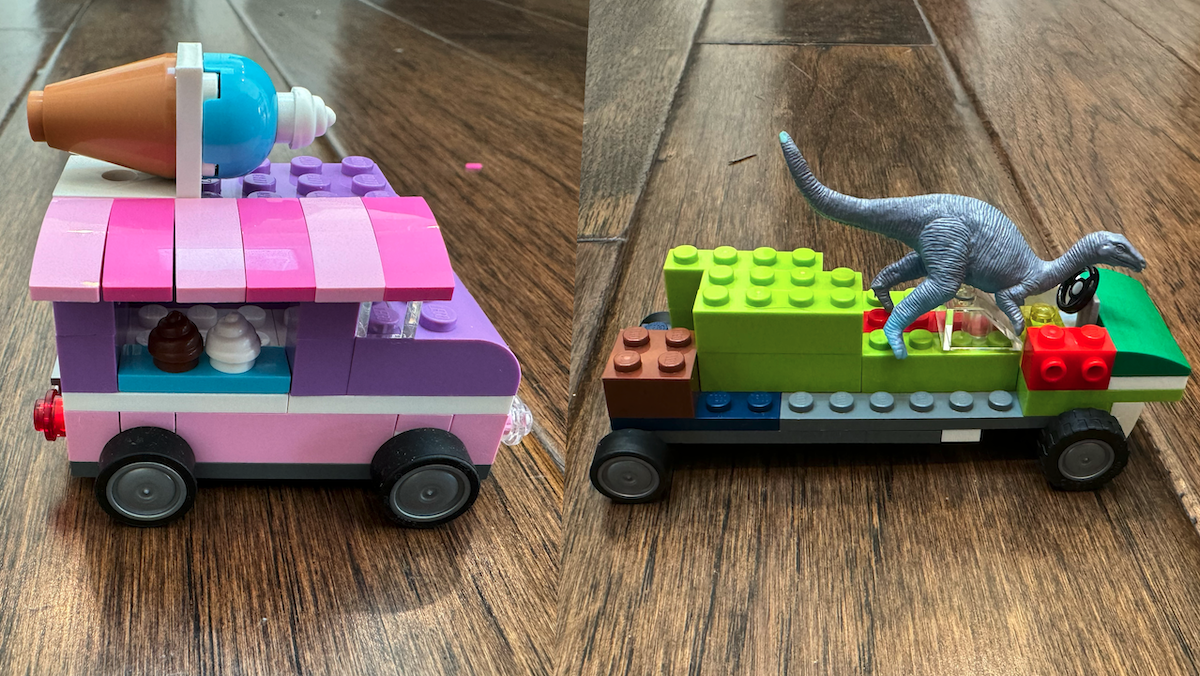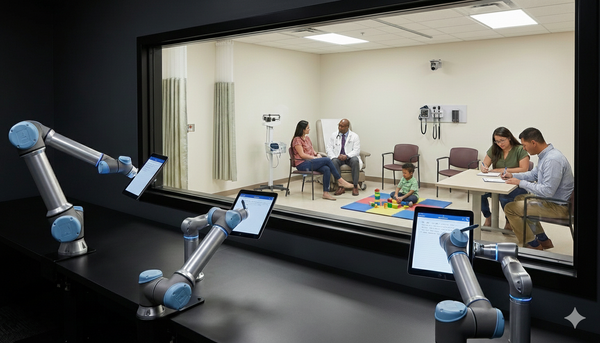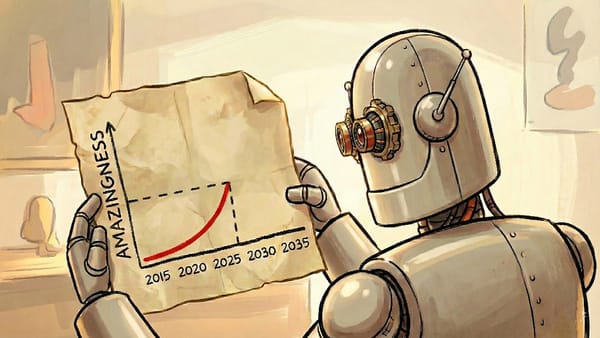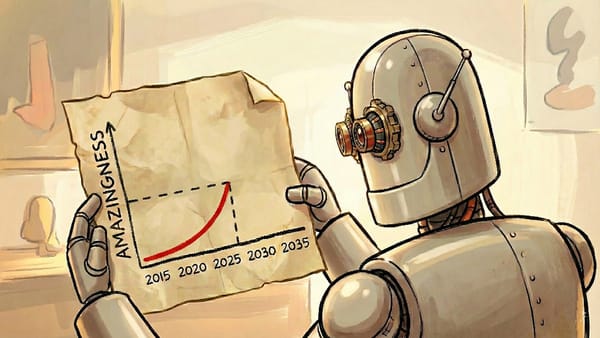Project Idea — A Car for Dinosaurs: AI projects don’t need to have a meaningful deliverable. Lower the bar and do something creative.
A good way to get started in AI is to start with coursework, which gives a systematic way to gain knowledge, and then to work on projects.

Dear friends,
A good way to get started in AI is to start with coursework, which gives a systematic way to gain knowledge, and then to work on projects. For many who hear this advice, “projects” may evoke a significant undertaking that delivers value to users. But I encourage you to set a lower bar and relish small, weekend tinkering projects that let you learn, even if they don’t result in a meaningful deliverable.
Recently, my son and daughter (ages 3 and 5) were building Lego vehicles. They built a beautiful ice-cream truck as well as a . . . umm . . . colorful and asymmetric dinosaur car, shown in the picture above. While most observers would judge the ice-cream truck as the superior creation, my kids built it by following Lego’s instructions, and it is likely identical to thousands of ice-cream trucks built by others. In contrast, building the dinosaur car required creativity and novel thinking. The exercise helped them hone their ability to pick and assemble Lego building blocks.
There is, of course, room for both mimicking others’ designs (with permission) and coming up with your own. As a parent, I try to celebrate both. (To be honest, I celebrated the dinosaur car more.) When learning to build Lego, it’s helpful to start by following a template. But eventually, building your own unique projects enriches your skills.
As a developer, too, I try to celebrate unique creations. Yes, it is nice to have beautiful software, and the impact of the output does matter. But good software is often written by people who spend many hours tinkering and building things. By building unique projects, you master key software building blocks. Then, using those blocks, you can go on to build bigger projects.
I routinely tinker with building AI applications, and a lot of my tinkering doesn’t result in anything useful. My latest example: I built a Streamlit app that would authenticate to Google docs, read the text in a doc, use a large language model to edit my text, and write the result back into the doc. I didn’t find it useful in the end because of friction in the user interface, and I’m sure a commercial provider will soon, if they haven’t already, build a better product than I was able to throw together in a couple of hours on a weekend. But such tinkering helps me hone my intuition and master software components (I now know how to programmatically interface with Google docs) that might be useful in future projects.
If you have an idea for a project, I encourage you to build it! Often, working on a project will also help you decide what additional skills to learn, perhaps through coursework. To sustain momentum, it helps to find friends with whom to talk about ideas and celebrate projects — large or small.
Keep tinkering!
Andrew




